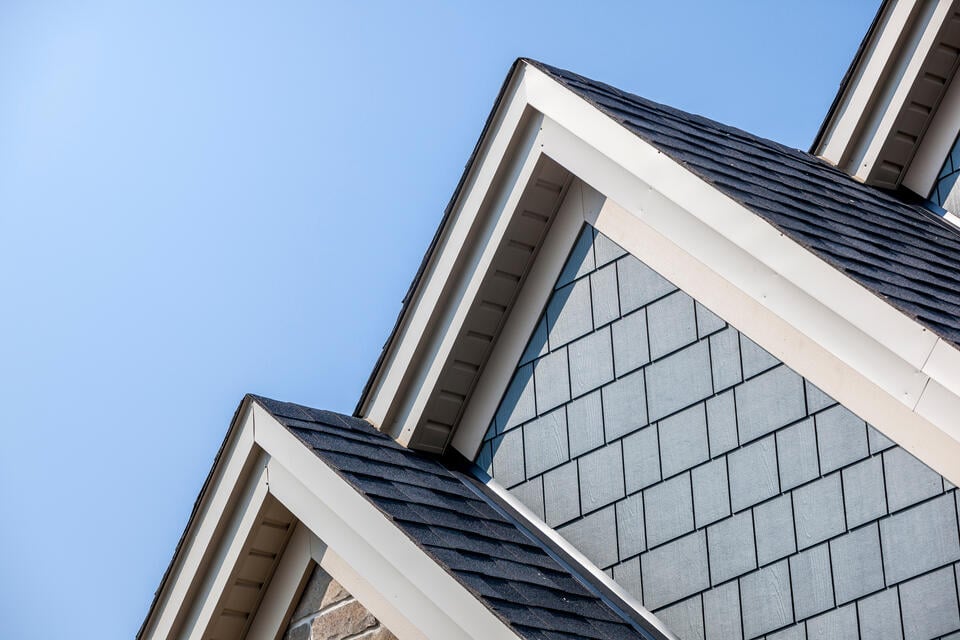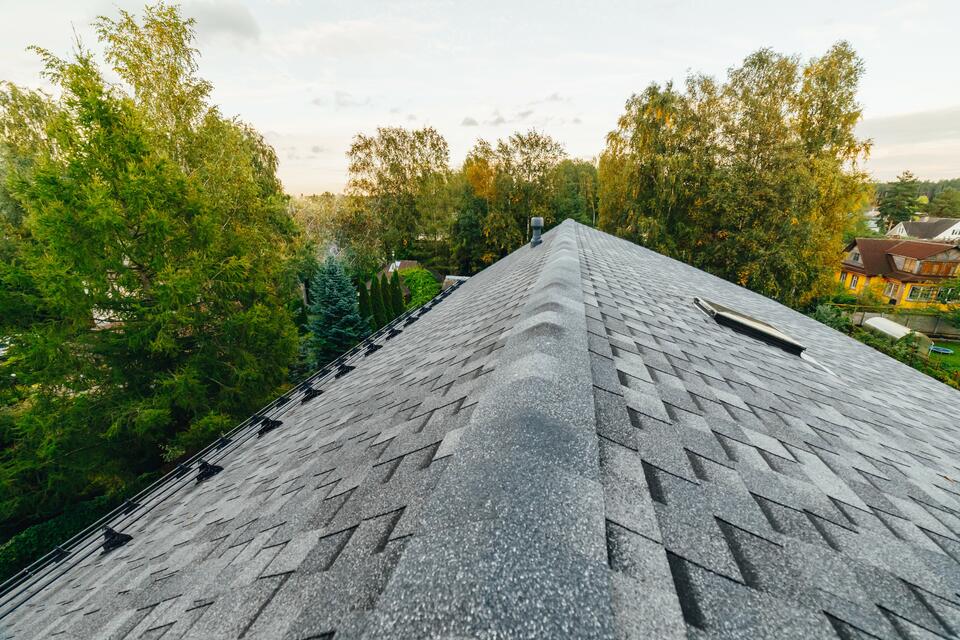
Roof Ridge Explained: The Key to Proper Roof Ventilation and Stability
Your roof is more than just a protective cover for your home; it’s a complex structure designed for both functionality and longevity. A critical yet often overlooked component of this system is the roof ridge—a feature that plays an essential role in ensuring proper ventilation and maintaining your roof’s stability. In this post, we’ll explore:
- What a roof ridge is and why it’s important
- Key ways to ventilate your roof effectively
- How roof ridges impact ventilation and structural stability
- Expert insights about installing or repairing your roof ridge
What Is a Roof Ridge?

At its most basic, the roof ridge is the horizontal line where two sloped sections of a roof meet, forming the highest point on your home. Visually, it’s where the two halves of a pitched roof come together. But a roof ridge isn’t just a structural feature—it serves as a foundation for ridge vents, which are crucial for keeping your home properly ventilated.
Without a properly functioning roof ridge and venting system, problems such as moisture buildup, heat retention, and even structural deterioration can occur. For a healthy and long-lasting roof, understanding your roof ridge is key.
The Importance of Roof Ridge Ventilation
Why does ventilation matter? Proper ventilation in your roofing system ensures your home stays comfortable, energy-efficient, and protected from common issues. The roof ridge plays a pivotal role in this process.
- Prevents Moisture Damage: Excess moisture in your attic or roofing structure can lead to mold, mildew, and even wood rot. Without proper ventilation through your roof ridge, trapped moisture can weaken your roof over time.
- Improves Energy Efficiency: Hot air rises, and your attic is often the first place it gets trapped. A well-installed roof ridge creates an escape route for heat, reducing the strain on your HVAC system and lowering energy bills.
- Extends Roof Lifespan: By regulating temperature and humidity levels, roof ridge ventilation prevents issues like ice dams in winter and shingle deterioration in summer, helping your roof last longer.
- Enhances Indoor Comfort: Proper airflow keeps your home cooler in summer and minimizes humidity year-round, creating a healthier and more comfortable living environment.
5 Key Ways to Ventilate Your Roof

When it comes to roofing ventilation, the roof ridge plays a central role. Proper ventilation is essential for maintaining the health of your home, preventing moisture build-up, and improving energy efficiency. Here are some effective methods to ensure optimum ventilation for your home.
1. Install a Ridge Vent
Ridge vents are installed along the peak of your roof, acting as a continuous opening that allows air to flow freely out of your attic. These vents are particularly effective because they work with the natural rising of warm air, letting heat and moisture escape without the need for mechanical assistance. Ridge vents are also discreet, blending seamlessly with the roofline, making them a popular choice for homeowners. To maximize their efficiency, ridge vents should be paired with intake vents, like soffit vents, to ensure a steady airflow. A well-installed ridge vent can prevent issues like mold, mildew, and damage caused by excessive attic heat.
2. Add Soffit Vents
Soffit vents are located under the eaves of your roof and are designed to draw in cool, fresh air from outside. These vents work in conjunction with ridge vents to create a continuous flow of air through the attic, known as a passive ventilation system. Cool air enters through the soffit vents at the lower part of the roof, while hot air exits through the ridge vent at the peak. This balanced system helps regulate attic temperature, reducing the strain on your air conditioning system in summer and preventing ice dams in winter. Proper installation and maintenance are key to ensuring soffit vents stay effective—clogged or blocked soffits can disrupt the airflow and lead to moisture problems.
3. Consider Gable Vents
Gable vents are often installed on the triangular wall sections (gables) of the attic and are a common feature in older homes. These vents allow air to flow in and out horizontally through the attic, providing ventilation in roof designs where ridge or soffit vents may not be feasible. While they are not as efficient as ridge and soffit vents for continuous airflow, gable vents can still help reduce attic heat and prevent moisture accumulation. For homes with steeply pitched roofs or complex architectural designs, gable vents can be a useful supplementary option. Adding a fan to the gable vent can further enhance its performance, especially during hot weather.
4. Use Turbine Vents
Turbine vents, also known as whirlybirds, are roof-mounted devices that use wind power to rotate and pull hot air out of the attic. They are particularly effective in areas with consistent wind and can help reduce attic temperatures significantly. While turbine vents are not as visually discreet as ridge vents, they are a practical choice for homes that need additional ventilation. Unlike ridge vents, which require passive airflow, turbine vents actively expel air, making them useful in attics with limited intake vents. However, they require proper installation and occasional maintenance to keep them functioning smoothly.
5. Check Your Ventilation Regularly
Even the most well-designed ventilation systems need regular upkeep to perform their best. Over time, ridge, soffit, gable, and turbine vents can become clogged with debris, dust, or even nests from small animals. Blockages reduce ventilation efficiency and can lead to problems like increased attic temperatures, moisture build-up, and higher energy costs. It’s essential to inspect your vents periodically, clear away debris, and ensure that the airflow is unobstructed. Additionally, during inspections, check for any signs of damage, such as cracks or rust, that might compromise the system’s effectiveness. Proactive maintenance can extend the lifespan of your ventilation system and protect your home from costly repairs.
How Roof Ridges Support Structural Stability
While ventilation is essential, it’s just one side of the coin. The roof ridge also plays a crucial role in maintaining your roof’s structural integrity. Let’s explore its key functions in greater detail.
Distributes Weight Evenly
The roof ridge acts as the backbone of your roof, ensuring that the entire structure’s weight is evenly distributed across the supporting walls. This even distribution is crucial for preventing undue pressure on specific points of the house, which could otherwise lead to structural strain, sagging, or even collapse over time. Especially in homes with expansive roof designs or steep slopes, the roof ridge helps to balance the load efficiently, reducing the risk of long-term damage and prolonging the lifespan of the roof. Without it, certain areas of the roof might bear more weight than intended, leading to costly repairs and potential safety hazards.
Secures the Roof Frame
Inside the roof ridge is the ridge board, a critical component that connects all the rafters. This board acts as an anchor point, holding the entire roof frame together and ensuring it remains rigid and stable. The ridge board’s importance becomes even more apparent in homes located in regions prone to extreme weather conditions, such as high winds, heavy snow, or earthquakes. By strengthening the roof’s framework, the ridge board keeps the rafters aligned and prevents the roof from shifting or bowing under stress. Essentially, it ties the entire system together, offering added durability and reinforcing the roof’s ability to withstand challenging environmental conditions.
Minimizes Leaks
The roof ridge is not just about strength—it also contributes to protecting your home from external elements. When properly sealed, it prevents water from infiltrating your home at one of the roof’s most vulnerable points. Without adequate sealing, rain, snow, or ice can seep through gaps in the ridge, leading to leaks that can damage your attic, insulation, and even your home’s interior. A sealed ridge is especially vital during storms, when strong winds can drive water into openings in the roof. By minimizing leaks, the roof ridge helps maintain a dry and protected attic space, reducing the risk of mold, rot, and water damage that can compromise your home’s structural integrity.
What to Consider When Installing or Repairing a Roof Ridge

Whether you’re building a new home, replacing your roof, or addressing a specific issue, here are key factors to keep in mind for a successful roof ridge installation or repair:
Proper Alignment
The alignment of your roof ridge is critical for structural integrity. The ridge board must be properly centered and aligned with the rafters to ensure even weight distribution across the roof. Poor alignment can lead to structural weaknesses, causing issues like sagging or uneven roof surfaces. Accurate measurements and meticulous planning are essential during this process. Don’t rush—precision here will set the foundation for a strong and reliable roof structure.
High-Quality Materials
Choosing the right materials for your roof ridge is an investment in durability and long-term performance. Opt for high-quality ridge vents to promote proper ventilation, which reduces moisture buildup and prevents mold growth. Use long-lasting shingles that can withstand harsh weather conditions, and select underlayment materials that provide an extra layer of protection against leaks and water damage. Cutting corners with cheaper, lower-quality materials may save money upfront, but can result in costly repairs down the line.
Professional Installation
Roof work is not only complex but also hazardous, especially for those without experience. Climbing and working at heights requires proper safety precautions, and mistakes during installation can lead to leaks, structural damage, or even accidents. Partnering with a professional roofing company, like Better Way Roofing, ensures your project is handled by experts with the skills and tools needed to complete the job safely and efficiently. A professional installation also gives you peace of mind, knowing the work meets industry standards and will stand the test of time.
Regular Inspections
Even after a successful installation, ongoing maintenance is key to protecting your roof ridge. Over time, weather exposure and natural wear can cause damage to ridge shingles, vents, or the structure itself. Scheduling regular inspections helps identify potential problems early, such as loose shingles or ventilation blockages, before they become major issues. Annual checks, particularly after severe weather events, can save you from costly repairs and extend the lifespan of your roof ridge. Proactive maintenance keeps your roof functioning effectively year after year.
Elevate Your Home with Better Way Roofing
At Better Way Roofing, we pride ourselves on delivering top-quality craftsmanship and exceptional customer service for all your roofing needs. Our experienced team understands the importance of a well-built and properly maintained roof ridge in protecting your home and ensuring its longevity. With a commitment to using only the best materials and techniques, we guarantee results that you can count on. Trust us to keep your home safe, secure, and looking great for years to come. Contact Better Way Roofing today for a free consultation and discover the difference our expertise can make!
